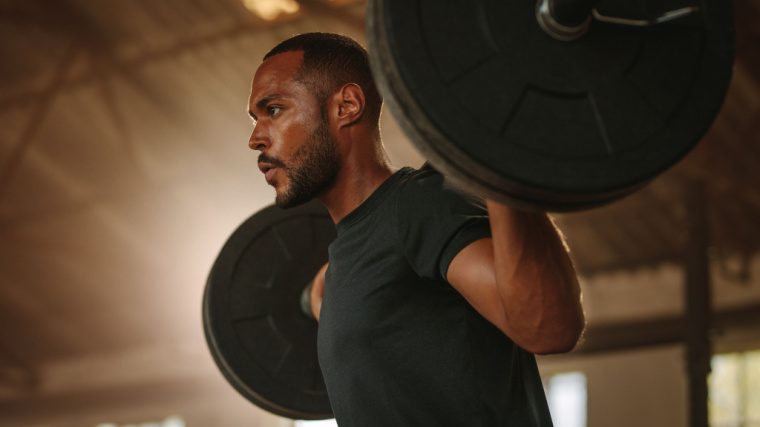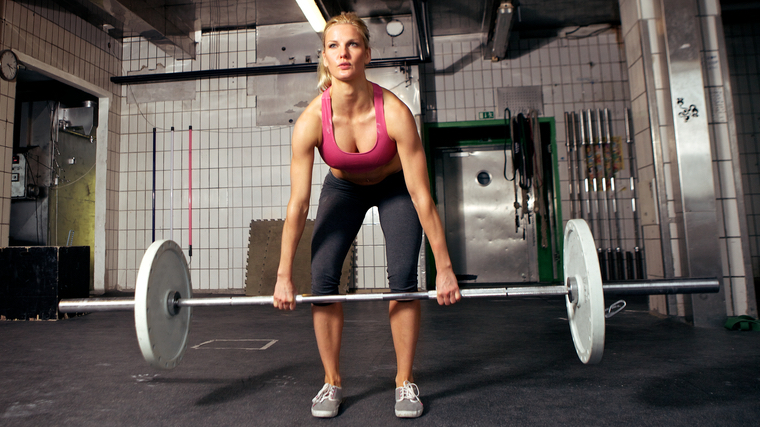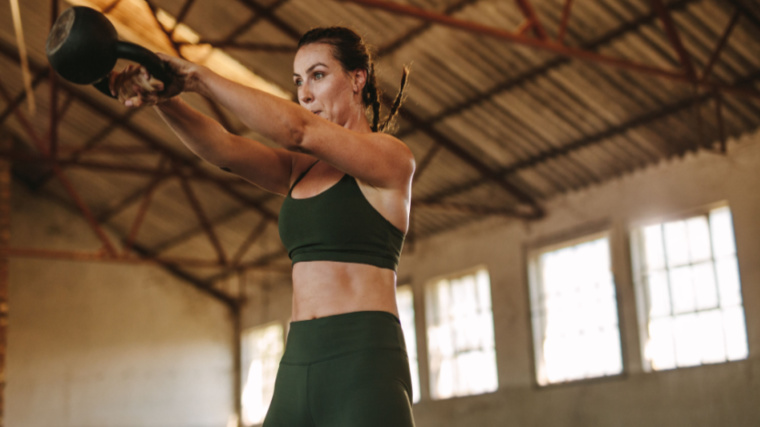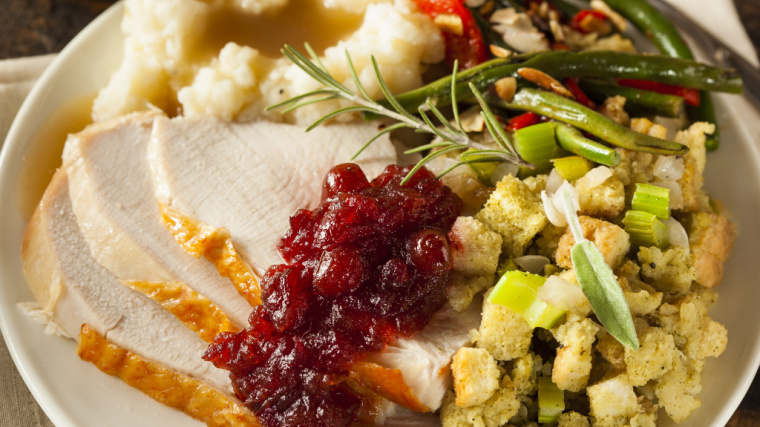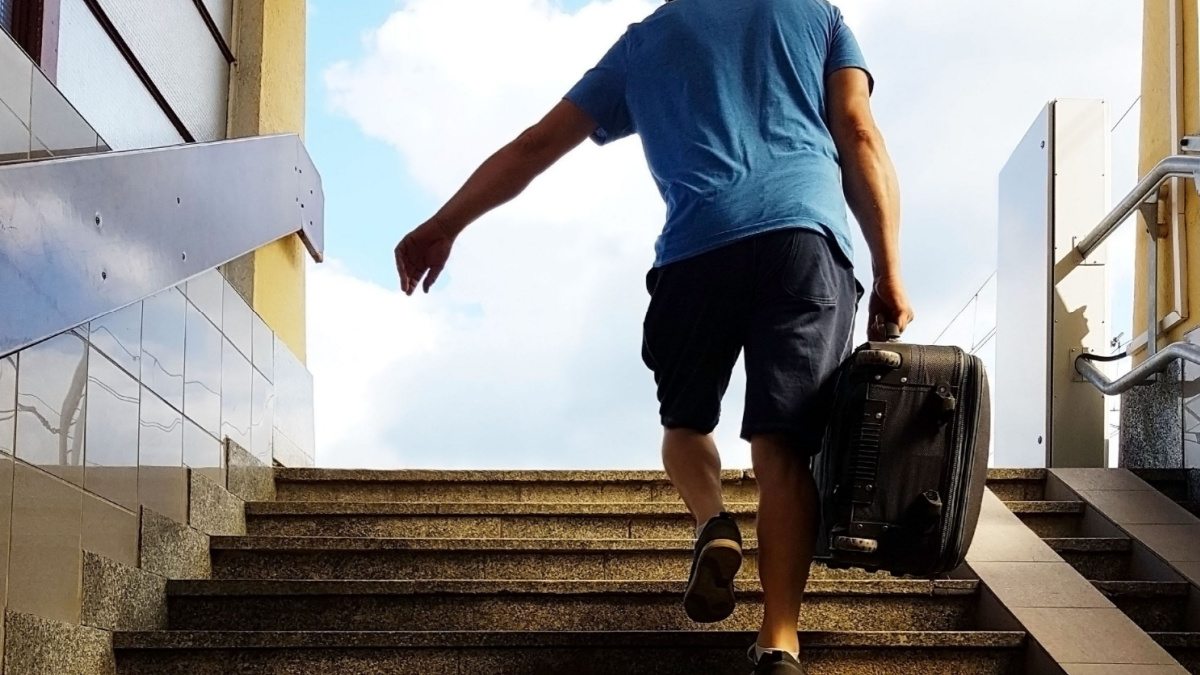
Travel season is upon us. For many, that means spending time in airports. Aside from the expected overpriced bottled water, bad chain restaurant food, and long lines for much-needed coffee, airport travel can also bring fatigue, bloating, and aches associated with inactivity. That’s not the best combination for getting into the “holiday spirit” or “vacation mode.”
To combat these negative effects, here’s a full workout you can do right in the airport. Complete with targeted mobility work, blood-pumping strength training, mood-boosting cardiovascular exercise, and restorative stretches, this entire workout can be performed within your terminal.
Jetsetter Airport Workout
Why Work Out at the Airport?
It’s simple. You are choosing to spend some of the downtime around your flight moving to counteract a few of the potential downsides of travel. Travel tends to confine us to small spaces and it separates us from our regular movement practices. Fortunately, exercise has powerful effects on our bodies and minds. It can keep us moving well and feeling good.
Just one bout of resistance training has been shown to increase concentrations of anti-inflammatory protein messengers in and around the knee joints. (1) Moreover, this effect lasted over three hours. Since prolonged sitting is typically hard on joints such as the knees, it makes sense to counteract immobility with exercise.
On the psychological side, a single bout of resistance training or cardiovascular training has been associated with improvements in mood and well-being. (2) If you work out regularly, you may be accustomed to the uplifting effects of exercise. On the flip side, you’re also likely to notice its absence. If you could keep the exercise-induced good vibes rolling through travel season, why wouldn’t you?
An underappreciated benefit of exercise is the potential boost to the immune system. Immediate and lasting elevations in immune cell activity occur after submaximal resistance training and cardiovascular exercise. (3) Ultimately, any non-fatiguing workout may stimulate the immune system to mobilize its resources.
Although these acute changes in the immune system have not been directly tied to risk of common illnesses, it seems safe to say that revving up your immune system may be desirable if you are soon to be confined with dozens of strangers on a plane.
Dynamic Mobility
The dynamic mobility part of this workout serves dual purposes. First, it’s a great warm-up. Second, it begins to address some of the “problem areas” that may become stiff or achy during prolonged travel. For this portion of the workout especially, settle into a controlled exercise pace. Find a quiet area of floor space, tune out the hustle and bustle of the airport, and then get to work.
Plank to Pike with Alternating Toe Reach
- How to Do it: Begin the high plank position — similar to the top of a push-up with your body straight and supported by your palms and forefeet. Move to the pike position by driving your hips back and up, putting your body into an inverted v-shape. Next, reach one hand toward the opposite foot. Return to the pike position and repeat with the other hand to the opposite foot. Drop your hips and return to the high plank position to complete the repetition. Repeat the entire sequence for reps.
- Sets and Reps: 3 x 10
- Rest Time: Rest only long enough to transition to the next exercise.
Plank to Deep Lunge with Rotations
- How to Do it: From the high plank position with your hands and feet on the ground, bring one leg forward. Place your foot outside of your hand, or as close as your flexibility allows. Lift your hand on the forward leg side and reach for the ceiling. Rotate your trunk and follow your hand with your eyes. Replace your hand to the floor and bring your leg back to the high plank position. Repeat with the other side to complete one full repetition.
- Sets and Reps: 3 x 10 per side
- Rest Time: Rest only long enough to transition to the next exercise.
Side Plank with Rotations
- How to Do it: Get into a side plank position, supporting your body with one forearm and both feet. To enhance stability, place the foot of your top leg slightly in front of the foot of your bottom leg. Reach the hand of your top arm underneath your rib cage, near the ground and toward the wall behind you. Allow your body to rotate at your support-side shoulder and keep your eyes locked on your moving hand. Reverse the movement and reach your moving arm toward the ceiling.
- Sets and Reps: 3 x 10 per side.
- Rest Time: Rest only long enough to transition to the next exercise.
Dead Bug
- How to Do it: Lie on your back with you arms straight up and your legs bent at roughly 90-degrees. Bring your low back into contact with the floor by rolling your pelvis backward (imagine “tucking your tail” or “bringing your belt buckle toward your chin”). Keep your low back in contact with the ground throughout the exercise. Simultaneously bring one arm to the ground overhead and the opposite leg down to the ground. Return to the start position. Repeat with the other arm and leg to complete one repetition. This can require some coordination, so move slowly and focus on controlling the movement
- Sets and Reps: 3 x 10 per side.
- Rest Time: Rest only long enough to transition to the first exercise.
Upper and Lower Body Training
The main course (or concourse) of the airport workout is full-body resistance training. The first two exercises use your body weight as the resistance, while the final three exercises use your carry-on luggage for resistance.
Each of these exercises will use an intensification technique called “elevator reps” to increase the training stimulus with limited load. Every individual repetition consists of one full range of motion repetition followed by one rep with roughly 50% range of motion and another rep with roughly 75% range of motion. Elevator reps are structured based on the resistance curve of the exercise. Each repetition forces you to spend extra time in the most challenging portion of the range of motion. The specific techniques are shown and described below.
If completing elevator reps for the target rep range is too challenging, either perform the basic exercise without the intensification technique or perform fewer total repetitions per set.
Push-Up with Elevator Reps
- How to Do it: Begin in the top position of the push-up. You should be supported on your palms and the front of your feet with your elbows extended and your trunk braced. Lower yourself to the bottom position of a push-up, with your chest just above the floor. This is where the “elevator reps” begin. Push halfway back to the top position then immediately reverse the movement and return to the bottom position. Push three-quarters of the way to the top position and immediately return to the bottom position. Finally, push all the way to the top position. That’s one rep.
- Sets and Reps: 3 x 10
- Rest Time: Rest 90 to 120 seconds between sets.
Rear Foot Elevated Split Squats with Elevator Reps
- How to Do it: Stand in a staggered stance with the top of your rear foot supported by a piece of stable luggage (definitely nothing with wheels), or a bench or chair. Shift your weight primarily onto your front leg and lower yourself toward the ground keeping your torso upright. In the bottom position, the knee of your rear leg should gently touch the floor or hover just above it. Time for the “elevator rep.” Push halfway to the top position then return to the bottom position. Then, push three-quarters of the way to the top position then return to the bottom position. Complete the repetition by pushing all the way to the top for one full repetition.
- Sets and Reps: 3 x 10 per leg.
- Rest Time: No rest between legs. Rest 90 to 120 seconds between sets.
Suitcase Row with Elevator Reps
- How to Do it: Hinge forward at your hips and hold your luggage below you at arm’s length. Keep your legs slightly bent. Pull your shoulders and upper arms up and back to row the luggage to your stomach. To perform the elevator repetition, lower the bag halfway to the bottom position, then row it back to your abdomen. Next, lower the bag three-quarters of the way to the bottom position and row it back up. Complete the rep by lowering the bag all the way to the bottom position.
- Sets and Reps: 3 x 10
- Rest Time: Rest 90 to 120 seconds between sets.
Suitcase Good Morning with Elevator Reps
- How to Do it: Stand up straight and hold your luggage tight to your chest. Unlock your knees and hinge forward at your hips until you feel a profound stretch in your hamstrings. This is the bottom position. To perform an elevator rep, return halfway to the top position then lower to the bottom position. Next, return three-quarters of the way to the top position and return to the bottom position. Finally, return to standing to end the repetition.
- Sets and Reps: 3 x 10
- Rest Time: Rest 90 to 120 seconds between sets.
Suitcase Upright Row with Elevator Reps
- How to Do it: Stand holding your luggage in front of your legs with your elbows straight. Draw your elbows up and out as you pull your luggage along the front of your body. In the top position, your hands should be at neck or sternum level. Lower the bag halfway to the bottom position then upright row it to the top position. Lower the bag three-quarters of the way to the bottom position and upright row it back to the top, and then lower the bag to the bottom position to complete one repetition.
- Sets and Reps: 3 x 10
- Rest Time: Rest 90 to 120 seconds between sets.
Cardiovascular Conditioning
In addition to duty-free shops, fast food, and the occasional shoeshine station, airports tend to offer large expanses of indoor space. If you avoid the escalators and moving sidewalks, the airport can provide a great environment for cardiovascular training.
After locating your gate and taking inventory of how much time you have to burn, go for a fitness walk. Since you cannot leave your luggage unattended, walking offers the added benefit of loaded carries.
- How to Do it: Walk or climb stairs at the highest effort and quickest pace that allows primarily nasal breathing, which may provide a more efficient cardio training stimulus compared to open-mouth breathing. (4) For a greater challenge for your grip and core, perform a literal suitcase carry. Instead of wheeling your luggage or slinging it over your shoulder, carry it at your side in one hand. Switch sides just before your grip fails.
- Sets and Duration: Two or three five-minute intervals.
- Rest Time: Rest two minutes between each interval.
Targeted Stretching
Stretching serves as a nice cooldown. At this stage, your muscles are warm and ready for a relaxing stretch. To efficiently wrap up your workout, each of these stretches hits multiple muscle groups. Like the dynamic mobility warm-up, special attention is given to areas of the body that commonly become stiff or cranky with prolonged seated travel.
Half Kneeling Hip Flexor Stretch with Side Bend
- How to Do it: Kneel down with your front hip and knee bent to 90-degrees and your the knee of your trailing leg on the floor underneath you. Roll your pelvis underneath you (again, think about “tucking your tailbone” or “tilting your belt buckle toward your chin”). You should feel a stretch develop in the front of your trail leg thigh. Squeeze your glute to maintain this stretch. Reach overhead with the arm of the kneeling leg and slightly bend sideways to increase the stretch. Hold this position before switching sides.
- Sets and Duration: 3 x 15 to 30-second holds per side.
- Rest Time: Rest only long enough to transition to the next stretch.
Pretzel Stretch
- How to Do it: Lie on your side with both legs bent in a “zig-zag” position — your bottom leg’s thigh in line with your torso and your other thigh pointed straight ahead. Reach back with your top arm to grab the foot of your bottom leg. Use a luggage strap, belt, or shoelace if necessary. Flex your top side hip and knee and use your opposite arm to push your knee toward the floor as far as comfortable, thereby promoting trunk rotation. Lie back and try to rest your head and both shoulders on the ground. Hold this stretched position for time before switching sides.
- Sets and Duration: 3 x 15 to 30-second holds per side.
- Rest Time: Rest only long enough to transition to the next stretch.
Thoracic Spine Extension Stretch
- How to Do it: Kneel in front of your luggage with your glutes resting on your heels. Place your elbows on the luggage and interlace your fingers at the back of your head. Drive your sternum “up” and forward, and aim to feel a stretch in your mid-back, lats, and triceps. If your luggage is soft-sided or collapsible (like a duffel bag), use a bench or chair instead.
- Sets and Duration: 3 x 15 to 30-second holds.
- Rest Time: Rest only long enough to transition to the next stretch.
Thoracic Spine Flexion Stretch
- How to Do it: Stand with your fingers interlaced in front of your stomach and your arms straight. Drop your chin to your chest and reach your hands forward as you push your mid-back backward. Think about maximizing the distance between your sternum and your hands and focus on feeling a stretch through your mid-back.
- Sets and Duration: 3 x 15 to 30-second holds.
- Rest Time: Rest only long enough to transition to the first stretch.
But What Will Other Travelers Think?
If you commit to this airport workout, you will draw some curious (and maybe even judgmental) eyes. Forget the lurkers. Your lifestyle is your business alone. Only you will live with the ramifications of prolonged sedentary behavior at the airport, and only you will experience the benefits of completing a light workout during your next layover or wait at the airport gate.
Assuming you want to arrive at your destination feeling fresh, why wouldn’t you take a few steps to ensure that outcome? A light workout at the airport can help. And speaking of feeling fresh, if you do work up a sweat, be sure to make a pit stop at the restroom to freshen up before you board your plane. Mobilized, energized, clean, and ready for take-off.
Add a Workout to Your Itinerary
Let’s face it, air travel is hard on the body. Fortunately, a workout that promotes mobility and a healthy pump might be the best non-pharmaceutical tonic for the ills of air travel. Until more airports start building gyms within their gates, bodyweight moves and luggage lifts might be your best options. Bookmark this airport workout as your travel companion for your next flight.
References
- Helmark, I. C., et al. (2010). Exercise increases interleukin-10 levels both intraarticularly and peri-synovially in patients with knee osteoarthritis: a randomized controlled trial. Arthritis Research & Therapy, 12(4), 1-11.
- Rocheleau, C. A., et al. (2004). Moderators of the relationship between exercise and mood changes: Gender, exertion level, and workout duration. Psychology & Health, 19(4), 491-506.
- Schlagheck, M. L., et al. (2020). Cellular immune response to acute exercise: Comparison of endurance and resistance exercise. European Journal of Haematology, 105(1), 75-84.
- Dallam, George & Kies, Bethany. (2020). The Effect of Nasal Breathing Versus Oral and Oronasal Breathing During Exercise: A Review. Journal of Sports Research. 7. 10.18488/journal.90.2020.71.1.10.
Featured Image: Xato / Shutterstock

